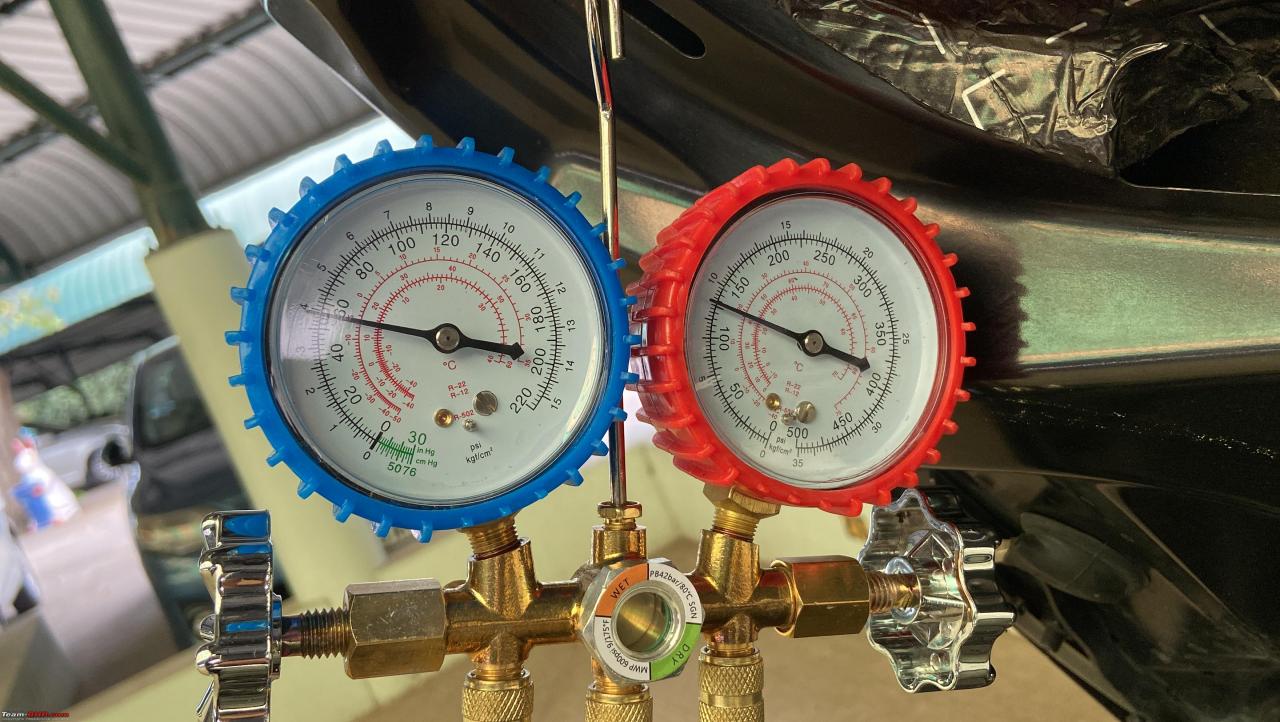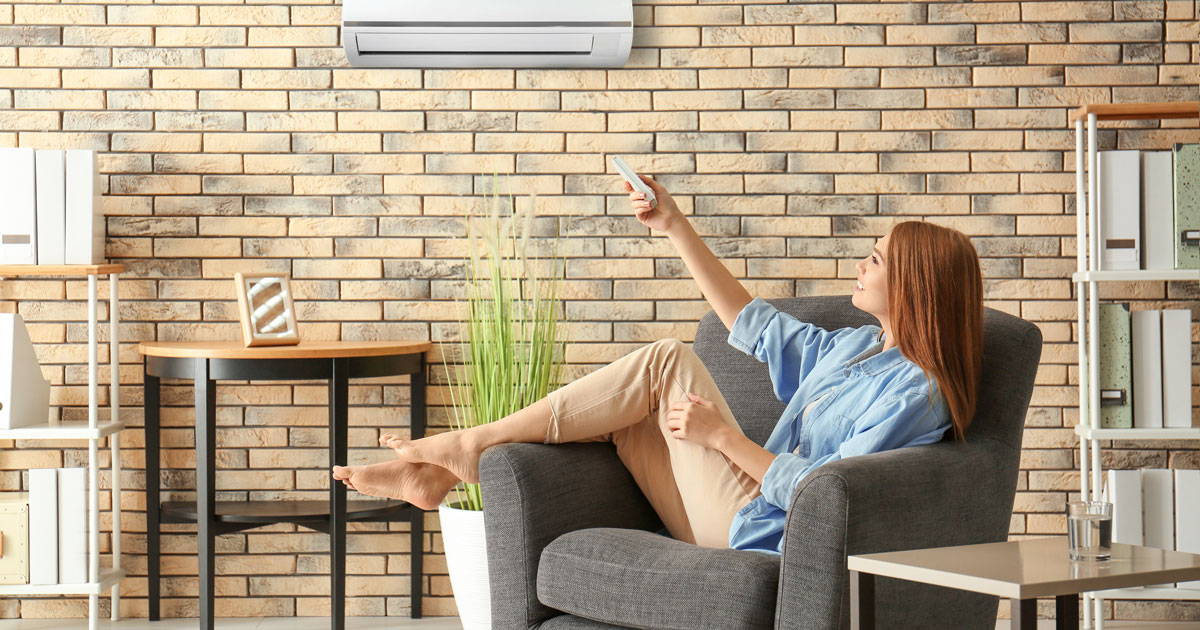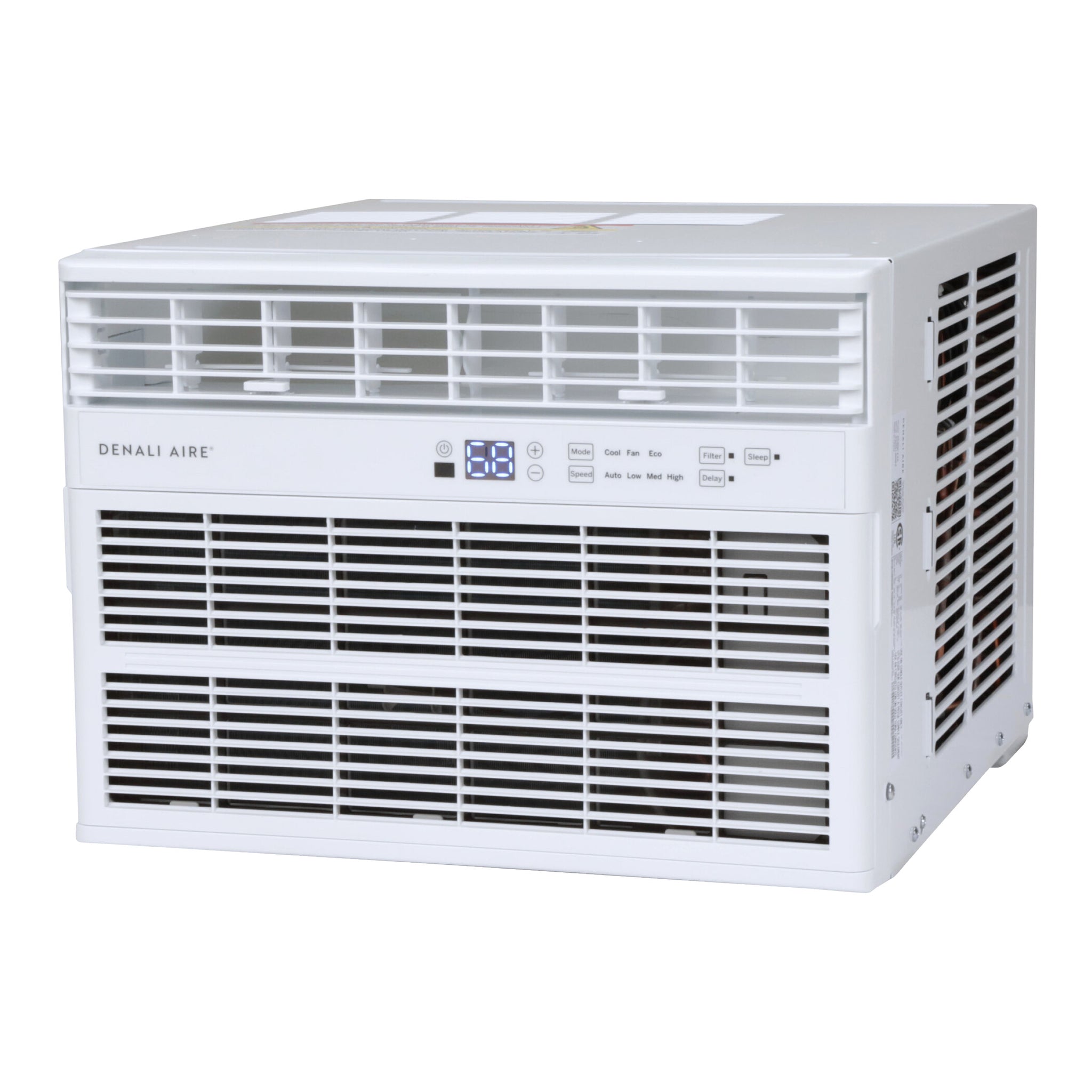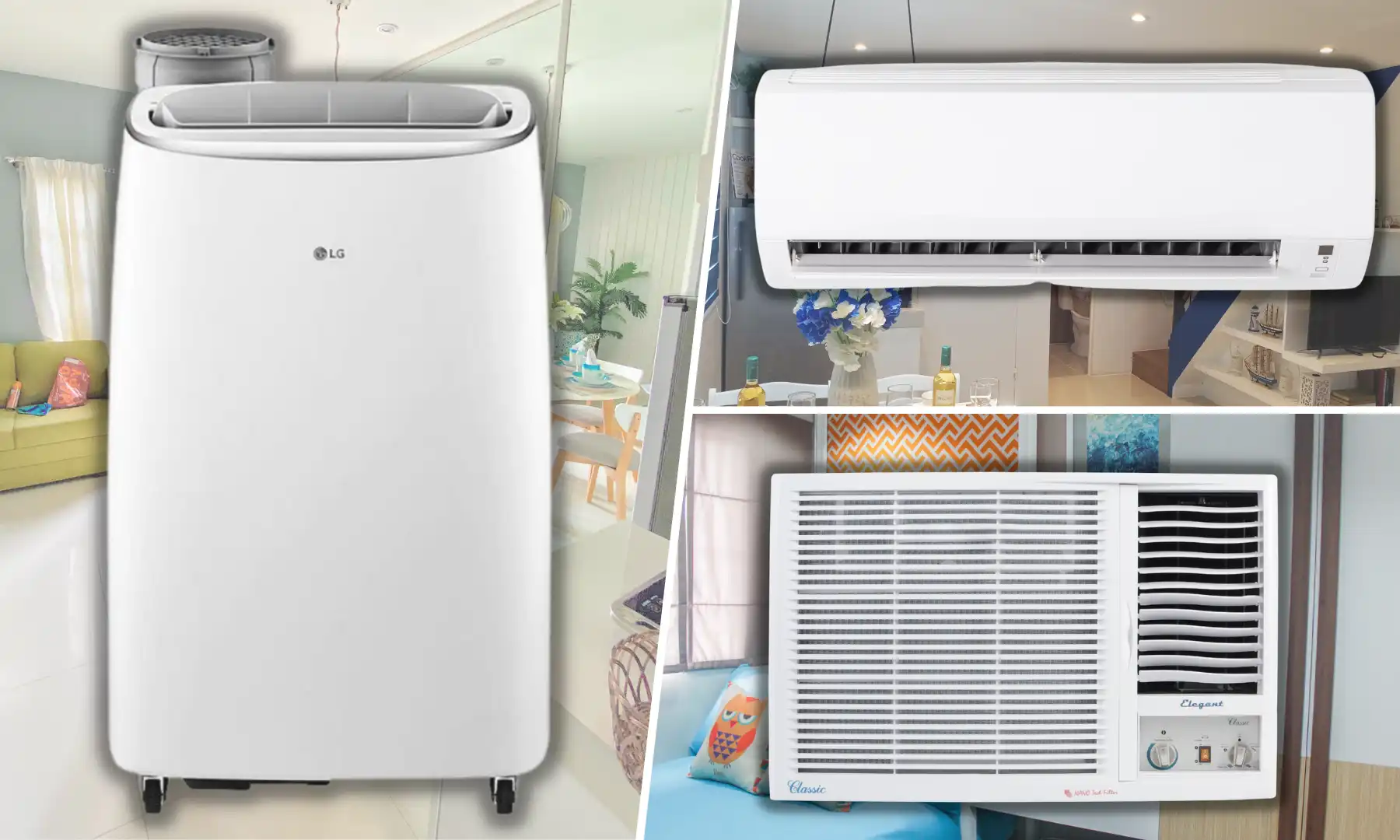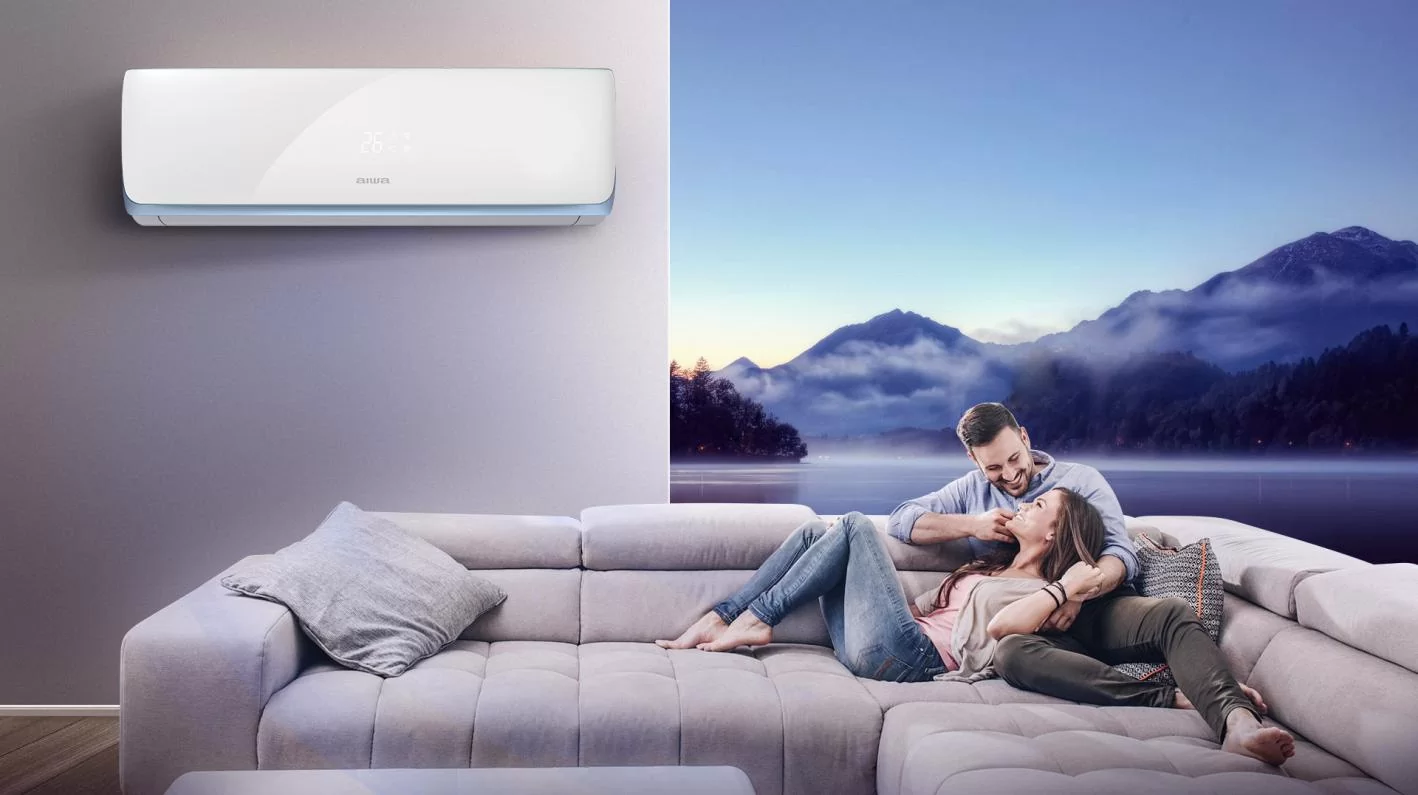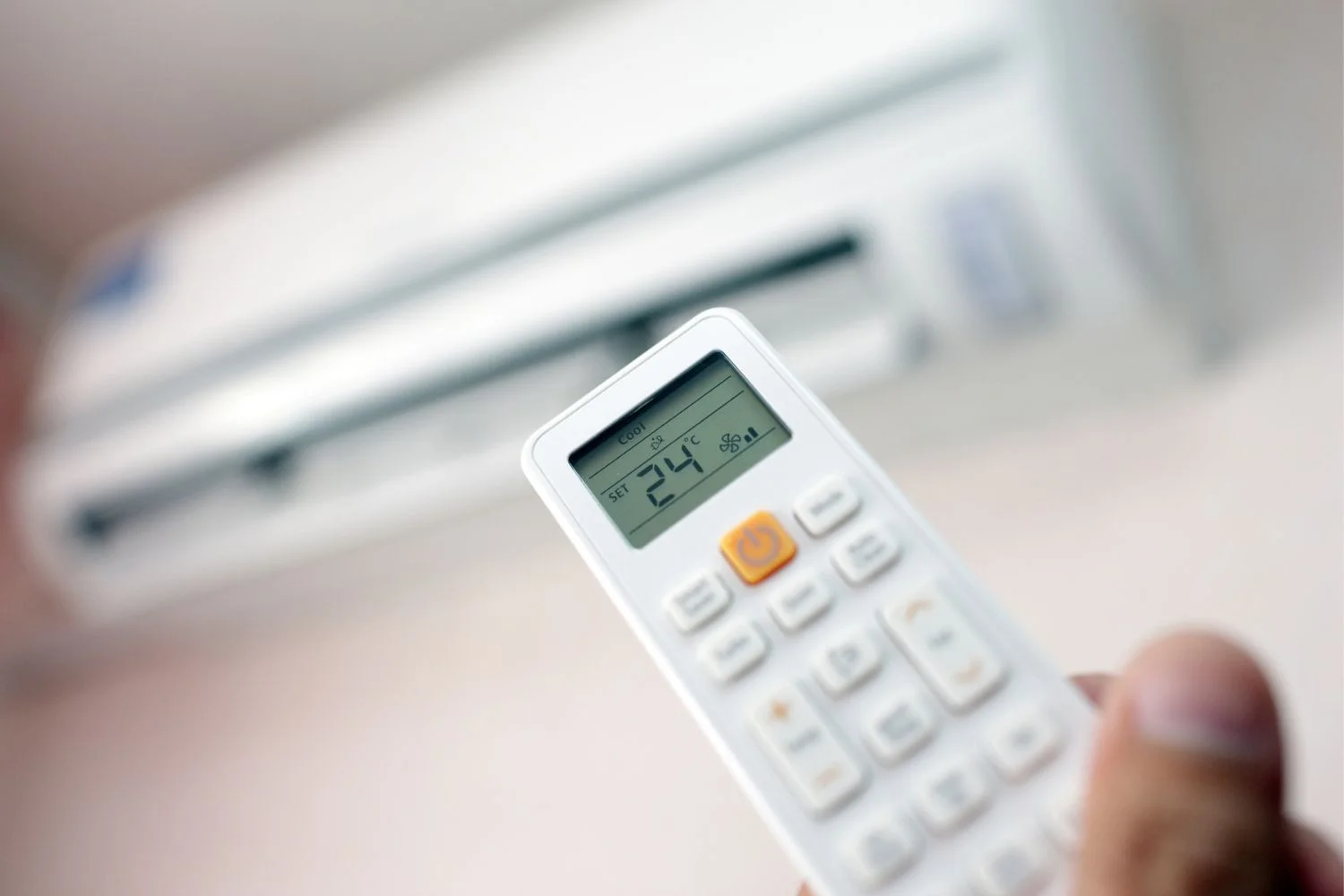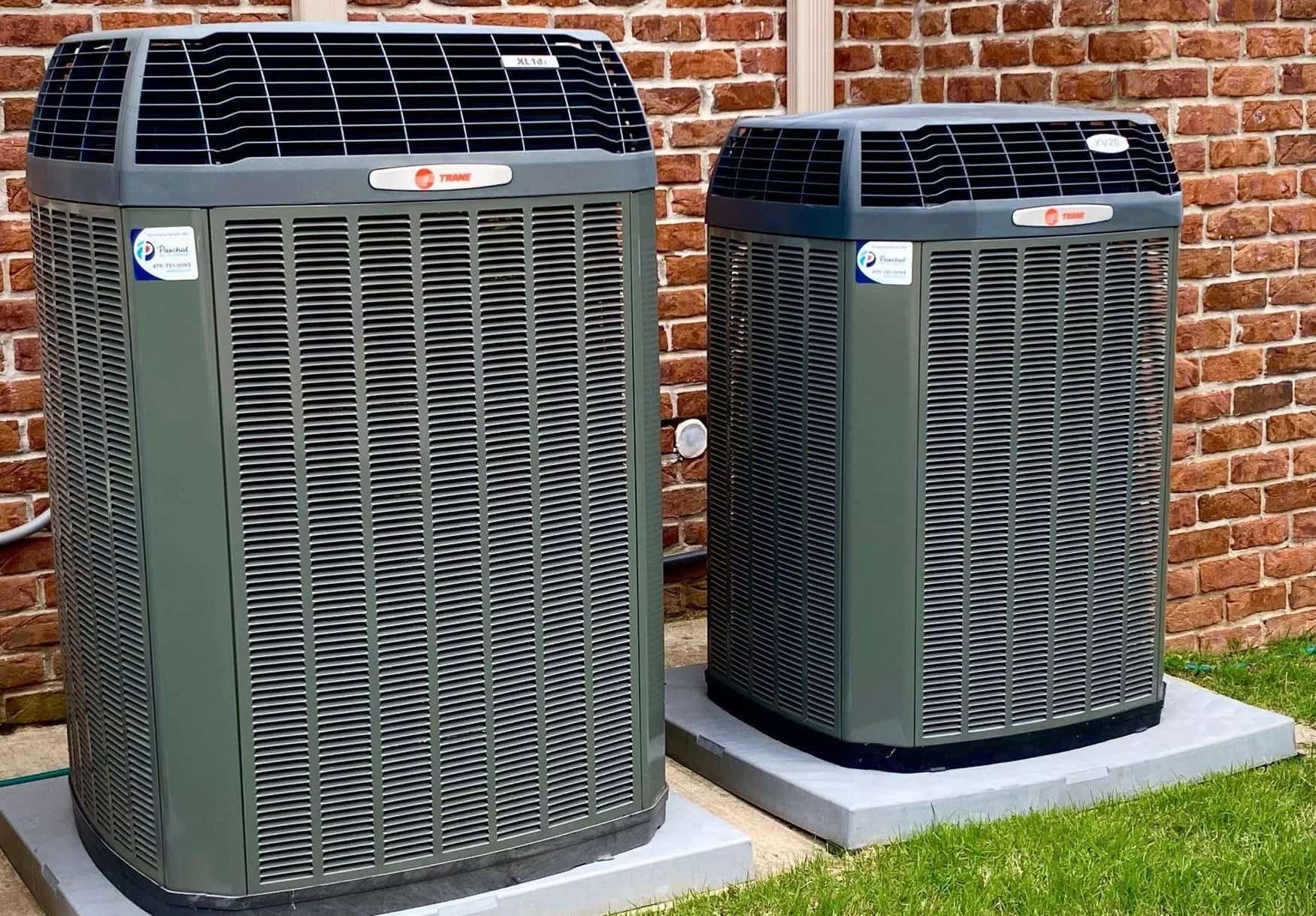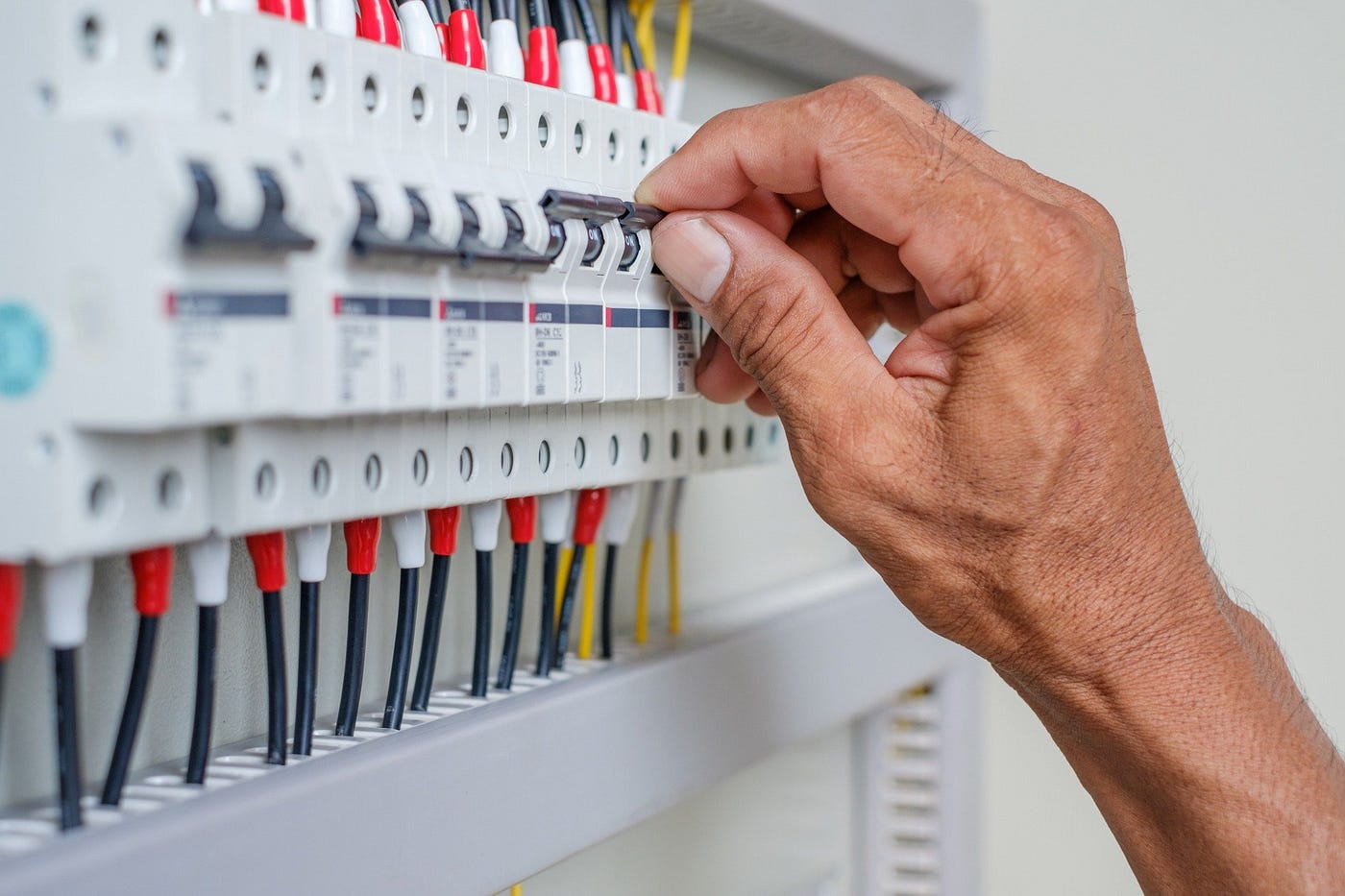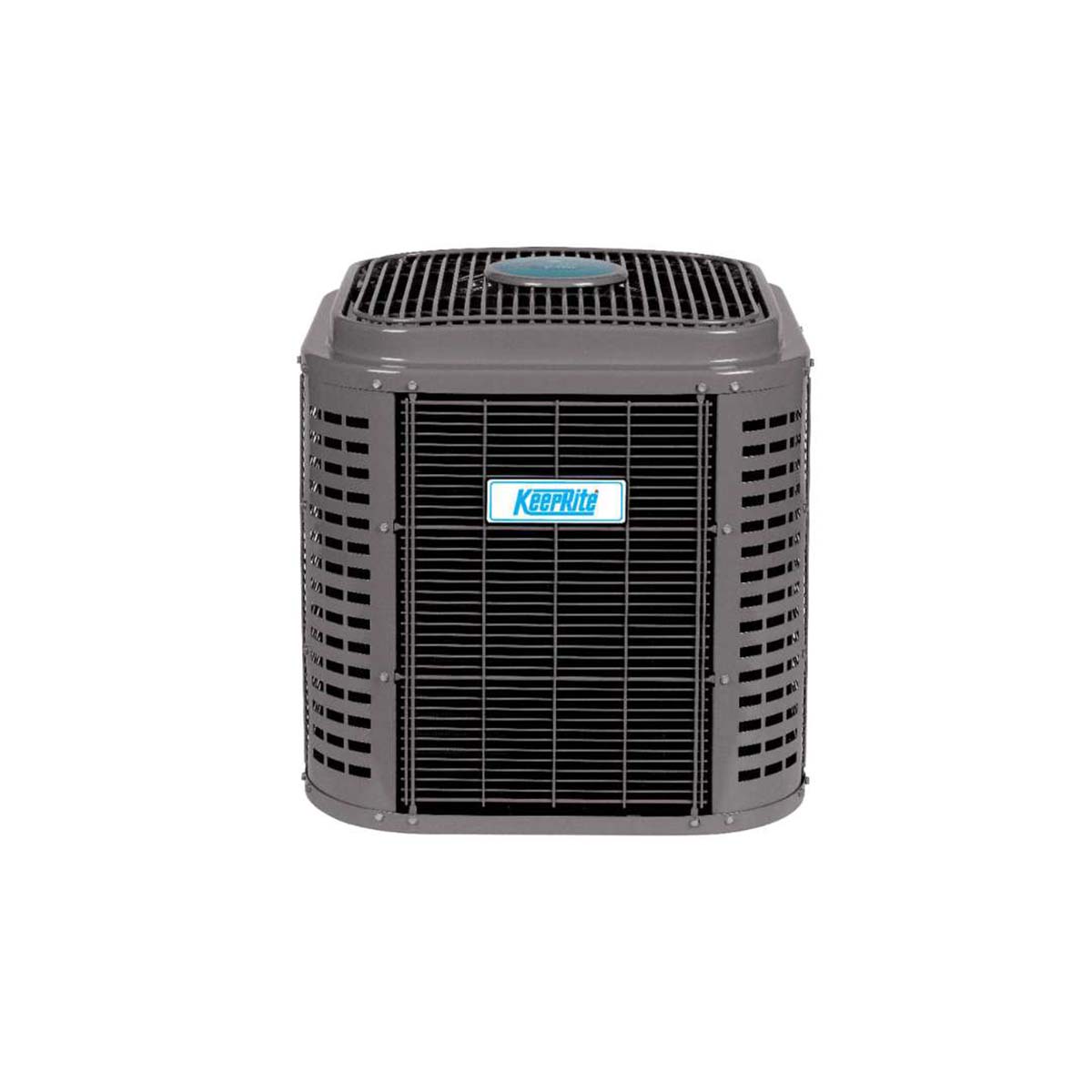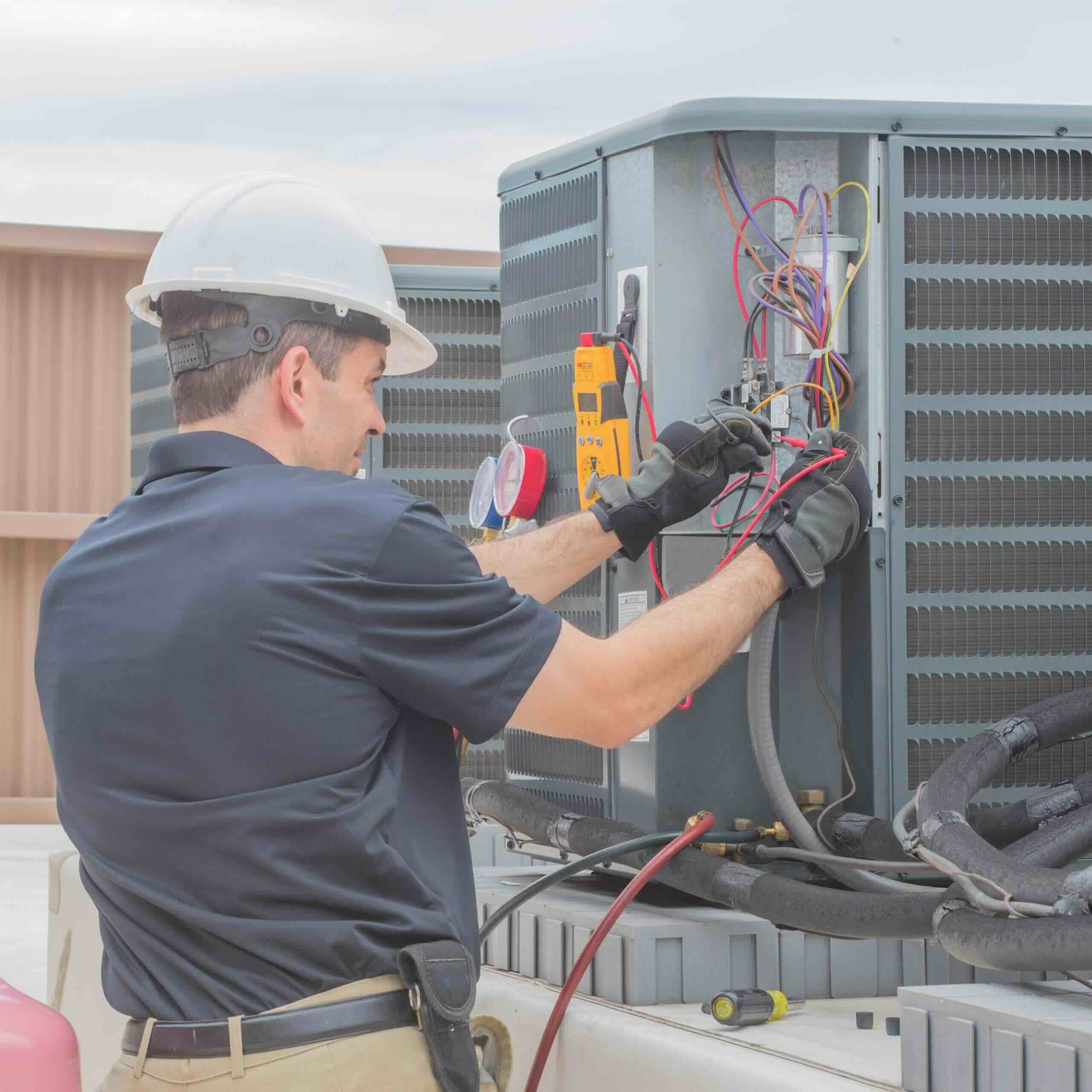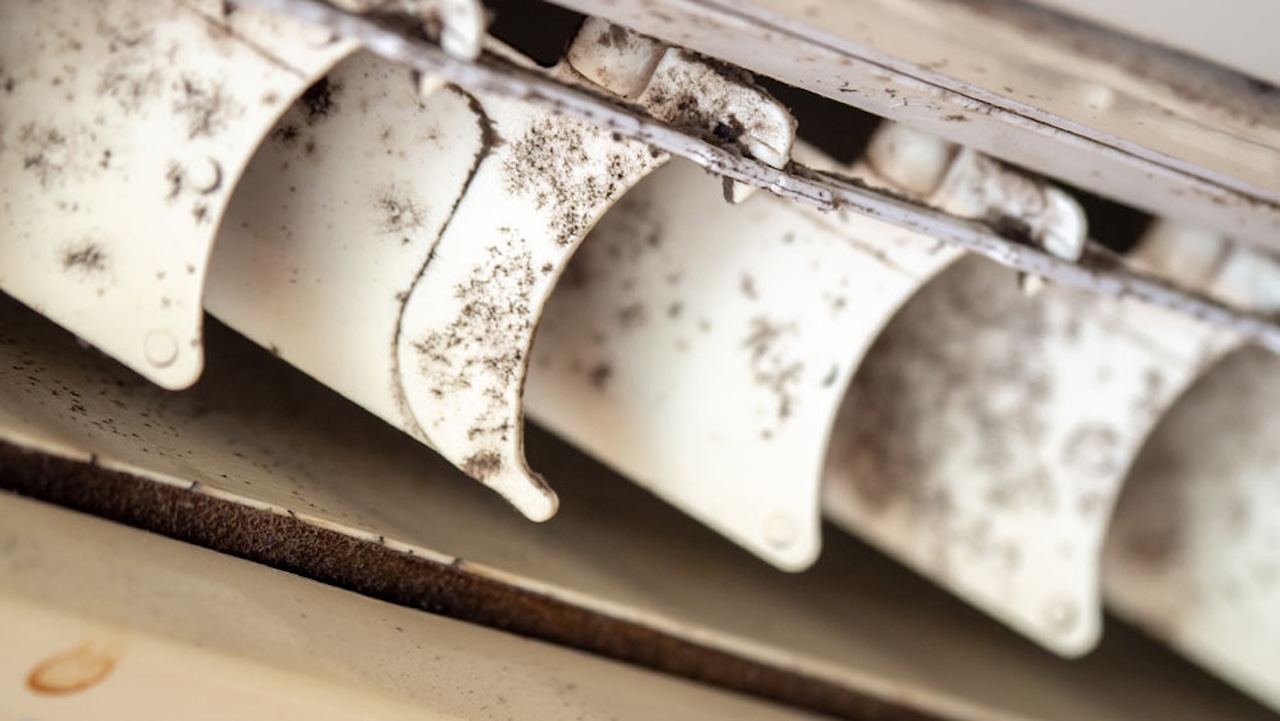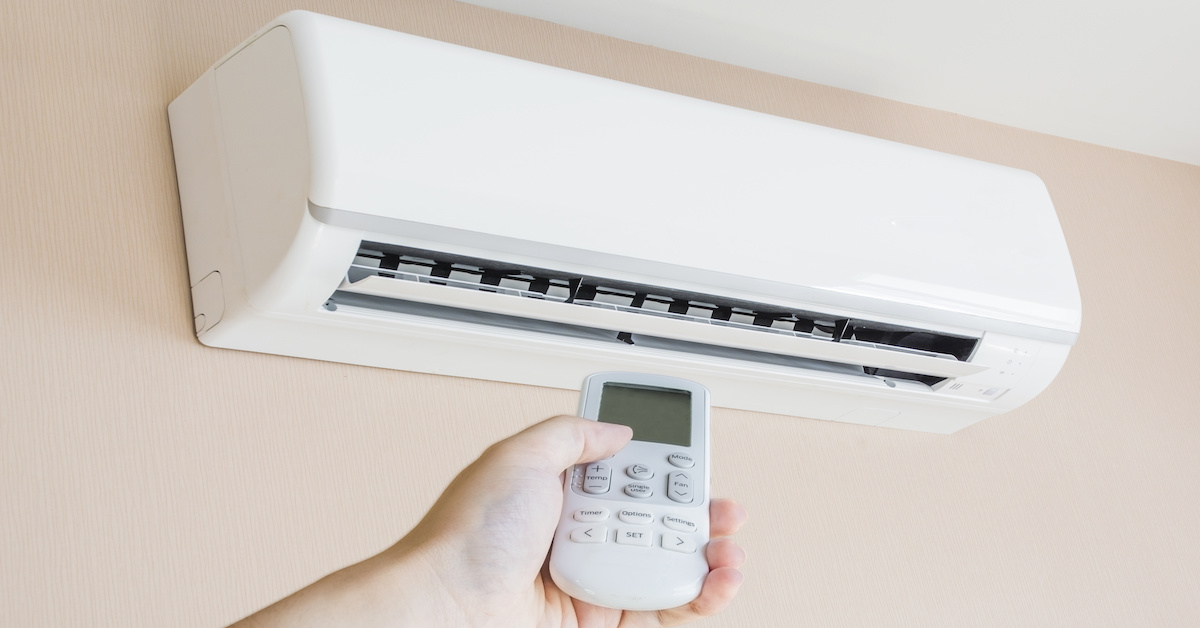Home>Home Maintenance>What Are The Parts Of An Air Conditioner
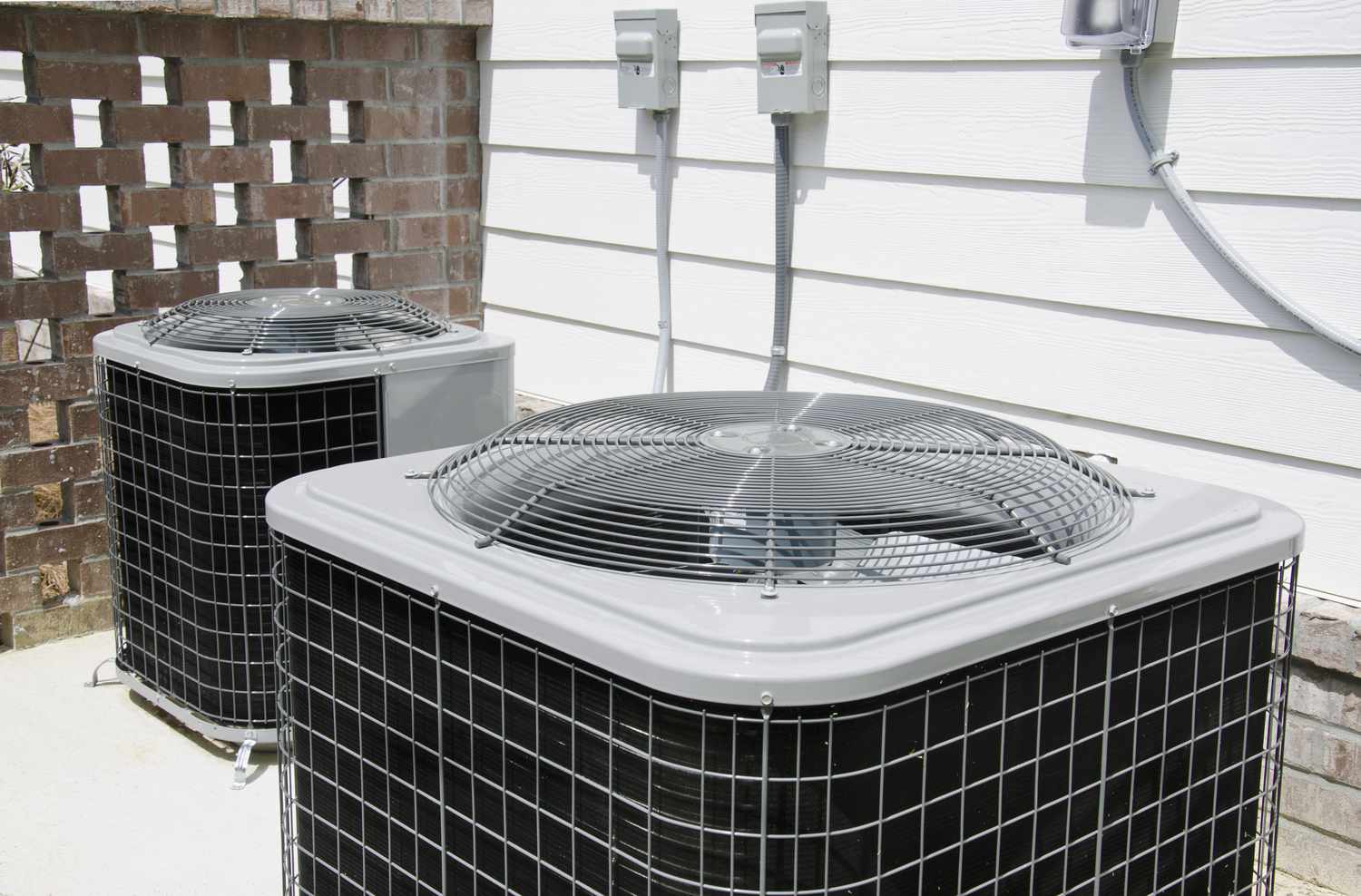

Home Maintenance
What Are The Parts Of An Air Conditioner
Modified: March 7, 2024
Learn about the essential parts of an air conditioner and how they contribute to home maintenance.
(Many of the links in this article redirect to a specific reviewed product. Your purchase of these products through affiliate links helps to generate commission for Storables.com, at no extra cost. Learn more)
Introduction
In the scorching summer months, an air conditioner becomes an essential component of our homes, providing a cool and comfortable environment. But have you ever wondered what actually goes on inside an air conditioner? What are the different parts that work together to keep us cool?
In this article, we will delve into the inner workings of an air conditioner and explore its various components. Understanding these parts will not only help you troubleshoot common issues but also enable you to make informed decisions when it comes to maintenance and repairs.
Let’s take a closer look at the major parts of an air conditioner:
Key Takeaways:
- Keep your air conditioner running smoothly by regularly maintaining key components like the compressor, condenser, and evaporator. This helps prevent issues and ensures efficient cooling for a comfortable home.
- Don’t forget to clean or replace your air filter regularly to maintain good indoor air quality and prevent airflow issues. Proper maintenance of the fans and thermostat also contributes to optimal cooling performance.
Compressor
The compressor is one of the key components of an air conditioner. It plays a crucial role in the cooling process by compressing the refrigerant gas and increasing its pressure and temperature.
Located in the outdoor unit of the air conditioner, the compressor is driven by an electric motor. It essentially functions as a pump, circulating the refrigerant through the system.
When the refrigerant leaves the compressor, it is in a high-pressure, high-temperature state. This is necessary to facilitate the transfer of heat from the indoor air to the outdoor environment.
The compressor operates in cycles. It draws in low-pressure refrigerant vapor from the evaporator and compresses it, increasing its temperature and pressure. The hot, pressurized refrigerant gas then moves to the next component, the condenser.
It is important to note that the compressor is a mechanical component that can wear out over time. Regular maintenance, such as cleaning and lubricating, can help prolong its lifespan. If your air conditioner is not cooling properly, a faulty compressor may be the culprit, requiring professional inspection and repair.
Condenser
The condenser is another vital part of an air conditioner and is located in the outdoor unit. Its primary function is to release the heat absorbed from the indoor air into the outdoor environment.
When the high-pressure, high-temperature refrigerant gas leaves the compressor, it enters the condenser coils. These coils are designed to maximize surface area and facilitate heat transfer. As the refrigerant flows through the coils, it cools down and condenses into a liquid state.
The condenser works in conjunction with the fan in the outdoor unit. The fan pulls air from the surroundings, passing it over the condenser coils to cool them. This helps dissipate heat more effectively. As a result, the refrigerant releases heat into the outdoor air, allowing it to return to a lower pressure and temperature.
Regular maintenance of the condenser is crucial to ensure optimal performance. Cleaning the coils and removing any debris or dirt buildup can help improve heat transfer efficiency. In addition, ensuring proper airflow around the condenser unit by keeping surrounding vegetation trimmed can prevent overheating of the system.
If the condenser is not functioning properly, it can lead to inefficient cooling and increased energy consumption. Signs of a faulty condenser may include reduced airflow, warm air coming from the vents, or strange noises coming from the outdoor unit. In such cases, it is recommended to contact a professional HVAC technician for inspection and repair.
Expansion Valve
The expansion valve is a small but crucial component of an air conditioner. It is located between the condenser and the evaporator and plays a key role in regulating the flow of refrigerant through the system.
Also known as the thermostatic expansion valve (TXV), it functions as a metering device. Its primary purpose is to control the amount of refrigerant that enters the evaporator coil, ensuring optimal cooling efficiency.
The expansion valve works by creating a pressure drop in the refrigerant. As the high-pressure liquid refrigerant passes through the valve, it undergoes a sudden expansion, resulting in a drop in temperature and pressure.
This drop in pressure causes the refrigerant to evaporate rapidly as it enters the evaporator coil, absorbing heat from the surrounding air. As a result, cool air is produced and circulated into the room.
The expansion valve is designed to maintain a precise and constant flow of refrigerant into the evaporator coil, regardless of external factors such as temperature fluctuations. Its functionality is critical in achieving the desired cooling effect and maintaining energy efficiency.
If the expansion valve becomes clogged, damaged, or malfunctions, it can disrupt the refrigerant flow, leading to insufficient cooling or even system failure. Signs of a faulty expansion valve may include icing on the evaporator coils, reduced airflow, or poor cooling performance.
In case of any issues with the expansion valve, it is recommended to seek professional assistance from an HVAC technician for proper diagnosis and repair.
Evaporator
The evaporator is a critical component of an air conditioner responsible for cooling the air before it is circulated into the room. Located inside the indoor unit, it works in conjunction with the fan to extract heat from the indoor air.
The evaporator consists of a network of coils or fins that are typically made of copper or aluminum. These coils are filled with cold refrigerant that absorbs heat from the surrounding air. As the air passes over the coils, the refrigerant inside the evaporator coils evaporates, resulting in a cooling effect.
The evaporator plays a central role in the refrigeration cycle of an air conditioner. When the refrigerant enters the evaporator as a low-pressure liquid, it is allowed to expand. This expansion causes the refrigerant to absorb heat from the indoor air, cooling it down in the process.
The cooled air is then blown back into the room through the air ducts by the fan. Meanwhile, the refrigerant absorbs the heat from the indoor air and turns into a low-pressure gas.
It is important to keep the evaporator coil clean and free of any dirt or dust buildup. Over time, these contaminants can impede the heat transfer process, reducing the efficiency of the air conditioner. Regular maintenance, such as cleaning or replacing air filters, is crucial in ensuring the optimal performance of the evaporator.
If the evaporator coil becomes frozen or blocked, it can lead to reduced airflow, inefficient cooling, or even a complete breakdown of the system. If you notice any signs of a malfunctioning evaporator, it is advisable to seek professional assistance to diagnose and fix the issue.
Read more: What Is EER In An Air Conditioner
Refrigerant
Refrigerant is a crucial component of an air conditioner that plays a vital role in the cooling process. It is the substance responsible for absorbing heat from the indoor air and releasing it outside.
Refrigerant is a specialized fluid that undergoes phase changes to transfer heat effectively. It exists in two states: a low-pressure gas and a high-pressure liquid. The refrigerant circulates through the air conditioner, alternating between these two states to facilitate the heat transfer process.
Commonly used refrigerants in residential air conditioning systems include R-410A (Puron), R-22 (Freon), and R-32. These refrigerants are specifically designed for optimal cooling efficiency, safety, and environmental considerations.
The cooling process begins with the refrigerant absorbing heat from the indoor air as it passes through the evaporator coils. This causes the refrigerant to evaporate, turning into a gas and cooling the air in the process.
The heated refrigerant gas then travels to the outdoor unit, where it enters the condenser coils. Here, the refrigerant releases the absorbed heat into the outdoor air by condensing back into a liquid state.
The liquid refrigerant flows back into the indoor unit, passing through the expansion valve, where it undergoes a rapid expansion, dropping its pressure and temperature. This prepares it for the next cycle of absorbing heat from the indoor air.
It’s important to note that refrigerants are carefully regulated due to their potential environmental impact. Older refrigerants like R-22 have been phased out due to their harmful effects on the ozone layer. Newer refrigerants such as R-410A are more environmentally friendly, but it is essential to handle and dispose of them properly.
If your air conditioner is low on refrigerant or if there is a refrigerant leak, it can result in reduced cooling performance. It is recommended to consult a professional HVAC technician to assess and address any refrigerant-related issues.
Regular maintenance of your air conditioner’s filters, coils, and fins can improve its efficiency and extend its lifespan. Be sure to clean or replace filters regularly and keep the outdoor unit free of debris.
Air Filter
The air filter is a vital component of an air conditioner that helps maintain indoor air quality and ensures the efficient operation of the system. It is typically located in the return air duct or in the air handler unit of the indoor system.
The main function of the air filter is to remove dust, dirt, pollen, pet dander, and other airborne particles from the incoming air. It traps these contaminants, preventing them from entering the air conditioning system and circulating throughout your home.
Regularly cleaning or replacing the air filter is essential to maintain good indoor air quality and prevent the buildup of dirt and debris within the system. A clogged or dirty air filter can significantly impede airflow, reducing the cooling efficiency of the air conditioner and putting unnecessary strain on the system.
The frequency of air filter maintenance depends on various factors such as the type of filter, the presence of pets or allergens, and the air quality in your home. In general, it is recommended to inspect the air filter every month and clean or replace it as needed.
There are different types of air filters available, including fiberglass filters, pleated filters, and high-efficiency particulate air (HEPA) filters. The type of filter you choose depends on your specific needs, including the level of filtration required and the airflow resistance.
Regular maintenance of the air filter not only improves indoor air quality but also helps maintain the overall efficiency of the air conditioning system. It ensures that the system can effectively cool the air without being hindered by dirt or debris, resulting in better cooling performance and energy efficiency.
Remember, a clean air filter not only promotes the health and well-being of your family but also extends the lifespan of your air conditioning system. So, be sure to include regular air filter maintenance in your home maintenance routine.
Fan
The fan is a crucial part of an air conditioner that plays a vital role in the circulation of air throughout the system. It is responsible for moving air across various components, such as the evaporator and condenser coils, to facilitate the cooling process.
An air conditioner typically has two fans: the evaporator fan, also known as the indoor fan, and the condenser fan, also known as the outdoor fan.
The evaporator fan is located in the indoor unit and is responsible for blowing air over the evaporator coils. As the air passes over the cold coils, it is cooled, and the cool air is then distributed throughout the room through the air ducts. The evaporator fan also helps to maintain a consistent airflow and prevent the buildup of moisture on the coils.
The condenser fan is located in the outdoor unit and is responsible for dissipating heat from the condenser coils. It pulls in air from the surroundings and blows it over the hot condenser coils, allowing the heat absorbed from the indoor air to be released into the outdoor environment. This process helps to maintain the efficiency of the system and prevent overheating.
The fans in an air conditioner are typically driven by electric motors. It is important to ensure that the fans are in good working condition, as any issues can affect the overall cooling performance of the system.
Regular maintenance of the fans includes cleaning the blades, checking for any obstructions, and ensuring proper lubrication of the motor. Inspecting and addressing any strange noises or reduced airflow from the fans is recommended to prevent further damage to the system.
In addition to their cooling functionality, the fans in an air conditioner also help with air circulation and ventilation in the room, ensuring a comfortable living environment.
So, don’t overlook the importance of the fans in your air conditioner. Keep them well-maintained to ensure efficient cooling and optimal performance of your system.
Thermostat
The thermostat is a small but essential component of an air conditioning system that allows you to control the temperature and settings of your home. It acts as the interface between you and your air conditioner, allowing you to adjust the desired temperature and select different operating modes.
The primary function of the thermostat is to sense the current temperature of the room and compare it to the temperature set by the user. Based on this comparison, it sends a signal to the air conditioner to either cool or heat the room as needed.
Modern thermostats come with various features, including programmable settings, digital displays, and even smart capabilities. Programmable thermostats allow you to set different temperature schedules throughout the day, which can help save energy by adjusting the cooling or heating based on when you’re home or away.
Some thermostats are even equipped with Wi-Fi connectivity, allowing you to control and monitor your air conditioner remotely through a mobile app. This provides convenience and flexibility, as you can adjust the temperature settings even when you’re not at home.
Proper placement of the thermostat is essential for accurate temperature sensing and control. It should be installed away from direct sunlight, heat sources, and drafts to ensure it reads the room temperature correctly.
Regular maintenance of the thermostat includes checking the batteries and ensuring they are properly functioning. Additionally, regular calibration and adjustment of the temperature settings can help maintain optimal comfort levels and energy efficiency.
If you notice any issues with your thermostat, such as incorrect temperature readings or unresponsiveness, it is recommended to have it inspected and, if necessary, replaced or repaired by a professional HVAC technician.
The thermostat serves as the control center of your air conditioning system, allowing you to customize and optimize your indoor comfort. So, make sure to take advantage of its features and settings to create a comfortable and energy-efficient home environment.
Ducts
Ducts play an integral role in delivering conditioned air throughout your home in an air conditioning system. They serve as the pathways for the air to travel from the air handler unit to the various rooms or spaces in your house, ensuring efficient and effective cooling.
The ductwork consists of a network of passages made of metal, fiberglass, or flexible materials that are installed within the walls, ceilings, or floors of your home. These ducts are responsible for distributing the cool air from the air conditioner and returning the warm air back to the unit for cooling.
Properly designed and maintained ductwork is essential for optimal performance and energy efficiency. Here are some key factors to consider:
- Size and Design: The size and design of the ductwork should be appropriate for the size of the air conditioning system and the layout of your home. Improperly sized or poorly designed ducts can result in airflow issues, such as reduced cooling efficiency and uneven temperature distribution.
- Insulation: Insulating the ducts is important for preventing the loss of cooled air during its journey through the ductwork. Insulated ducts help maintain the desired temperature and reduce energy wastage.
- Sealing: Properly sealed ductwork helps to prevent air leaks, ensuring that the cooled air is efficiently delivered to the intended areas. Any gaps or leaks in the ducts can lead to air loss, decreasing both the effectiveness and efficiency of the cooling system.
- Cleaning and Maintenance: Regular cleaning of ducts is crucial to remove dust, debris, and allergens that can accumulate over time. Clogged or dirty ducts can hinder the airflow and reduce the indoor air quality.
If you notice issues with your ductwork, such as inconsistent airflow, strange noises, or higher energy bills, it may be a sign of duct problems. The assistance of a professional HVAC technician can help diagnose and address any ductwork issues for optimal cooling performance.
Remember, well-designed and properly maintained ductwork ensures that cool air is effectively delivered to every room in your home, providing comfortable and evenly distributed cooling throughout.
Conclusion
An air conditioner is a complex system comprised of several key components that work together to provide us with a cool and comfortable indoor environment. Understanding these components not only helps us troubleshoot common issues but also empowers us to make informed decisions when it comes to maintenance and repairs.
From the compressor and condenser to the expansion valve and evaporator, each part performs a specific role in the cooling process. The refrigerant acts as the medium for heat transfer, while the air filter ensures clean and healthy indoor air quality. The fan circulates the air, and the thermostat allows us to control the temperature settings.
Maintaining these components is crucial for the optimal performance and longevity of your air conditioning system. Regular cleaning, inspection, and maintenance help prevent issues such as reduced cooling efficiency, poor indoor air quality, and system failures.
It’s also essential to choose the right size and design for the ductwork, as it plays a vital role in delivering conditioned air throughout your home. Insulating and properly sealing the ducts further contribute to energy efficiency and consistent cooling performance.
By understanding the various parts of an air conditioner and their functions, you’ll be better equipped to identify potential problems early on and take appropriate action. However, it’s important to remember that some maintenance and repairs should be left to professionals, as they have the expertise and necessary tools to handle complex issues.
So, the next time you turn on your air conditioner and enjoy the cool air, take a moment to appreciate the intricate workings of this remarkable system. And with proper care and attention, your air conditioner will continue to keep you cool and comfortable for years to come.
Frequently Asked Questions about What Are The Parts Of An Air Conditioner
Was this page helpful?
At Storables.com, we guarantee accurate and reliable information. Our content, validated by Expert Board Contributors, is crafted following stringent Editorial Policies. We're committed to providing you with well-researched, expert-backed insights for all your informational needs.
